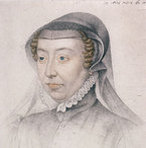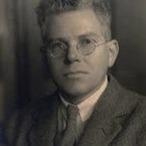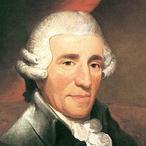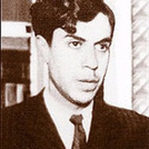|
Last year, at the Barbican, I was lucky enough to get a stalls seat near the front at a concert of forgotten castrati arias performed by Cecilia Bartoli to promote her Sacrificium album. It was a fantastic evening, with Bartoli exhibiting some inhumanly fast coloratura, phrases lasting over 30 seconds, and pinpoint pianissimos. A couple of weeks later, I noticed she was to perform another selection of Baroque arias this December, focusing on Handel. Out came the credit card, and a week later I was the proud owner of a ticket. Having waited a year to see this concert, I wondered if anything could match the brilliance of the Sacrificium selection: I pleased to say that not only did she match it, she even managed to improve on it. Billed as "Handel and his Rivals", the "Rivals" in question were the musical directors and composers associated with the "Opera of the Nobility", a company set up by a group of nobles in the court of Frederick, Prince of Wales. Frederick hated his parents, King George II and Queen Caroline of Ansbach, to the extent that he opposed them in almost everything they did. This situation probably arose due to the prolonged separation between parents and child, which lead to George and Caroline to refer to him as a "foundling"! Anyway, he setup an opera company to rival Handel's, as Handel was much loved by the King and Queen. The first musical director of the Opera of the Nobility was Nicola Porpora. Porpora's opening gambit with the Opera of the Nobility was the Opera Adrianna in Naxo: it was a huge success. Poropra had managed to poach several of Handel's former singers, including Senesino, Montagnana and Cuzzoni, to perform, and he also, in later years, was able to lure Farinelli and Caffarelli, his former students, to England as well. Francesco Maria Veracini was another composer invited by the company. He produced many orchestral compositions, and a few not-so-hot operas. Even Johann Adolf Hasse had been approached to take up a post, though according to Julie Anne Sadie's "Companion to Baroque Music", Hasse: "declined, perhaps partly out of deference to Handel, whom he had met in 1729." (I knew there was a reason I liked Hasse so much) Anyway, Porpora eventually left for Venice in 1736, the Opera of the Nobility went into bankruptcy, and it was dissolved in 1737. Bartoli's latest few projects have all been called "historically informed" (take for instance the Sacrificium and Malibran projects, or the current productions of Belini's Norma) and "Handel and his Rivals" is no different. One nice touch was her decision to start the concert with the Overture to, and arias from, the opera Rinaldo. Handel's first opera for the English public, Rinaldo premiered in London on 24 Feburary 1711, featuring two of the leading castrati of the age, the famous Nicolo Grimaldi, and Valentino Urbani. It contains arias such as "Lascia ch'io pianga", "Venti, turbini" and "Cara sposa". Rinaldo was a huge success, and prompted Handel to decide (in 1712) to stay in England permanently (he even applied for naturalisation in 1727). The concert itself almost began with a disaster, as the violin principal, Julia Schroder, almost ended up on the floor after tripping on her platform. Luckily it was only her papers that went flying! After a rousing performance of the Rinaldo Overture by the Basel Chamber Orchestra, Ms Bartoli bounded on stage in a stunning black, figure-hugging dress, complete with sparkly bracelet, earrings and tiara, and gigantic heals. It was a perfect combination for her first number, also from Rinaldo: the sorceress Armida's "Furie terribili". Accompanied by a wind machine, and metal sheet (which a young man dressed in black thwacked about to produce the thunderclaps), Bartoli wowed the audience with this firecracker of an opener. With its Furioso speed marking, "Furie terribili" is the sorceress Armida's call to her furies to come to her, and trail terror in her wake. Bartoli performed perfectly, raging at the audience, scowling at the poor man thwacking the metal sheet, and all the while subtly conducting the orchestra with a look or gesture. It was a formidable opener, which in the hands of a lesser artist could have gone horribly wrong. For Bartoli though it set the scene for what was to be a powerful concert. Next up was was "Dunque i Lacci... Ah! crudel", also from Rinaldo. Here Armida is torn between loving her handsome captive, and wanting her furies to "Arise... and discover new types of pain and punishment". Nice! The accompanied recitative "Dunque i Lacci" sets the scene perfectly, with the orchestra moving between long held notes and fiery bursts of semiquaver rumblings. Key to the introduction of the aria is the phrase "Ah, my feeble heart, can you shelter a traitor still?" It is this quandary around which the aria "Ah! crudel" revolves, with its mournful, pining A section, and its fast, furious B section. It is a perfect aria for Bartoli, as it contrasts her outstanding pianissimo and breath control with her machine-gun coloratura. A copy of the score is available here. The best example of Bartoli's beautiful, well-supported pianissimo, combined with almost preternatural breath control, came in the form of Alcina's aria "Ah! mio cor!" Having already heard this aria recently in a concert with Inga Kalna singing the role of Alcina only a few days before, I was interested to see how the two would compare and contrast. Where Kalna was regal and reserved, Bartoli was passionate and emotive. This is not to criticize either, just to highlight how two very different approaches can be equally enjoyable. Bartoli's performance creates a floating feeling, seemingly everlasting, which draws the senses within the periphery of her aura, and holds the concentration with every tiny nuance of voice or gesture. For me, this ability even outweighs her famed coloratura. (I remember the first time I experienced this skill of hers was when she sang "Sposa, non mi conosci" as a part of the Sacrificium concert) Judging by the applause, "Ah! moi cor" was the highlight of the first half. A copy of the score can be seen here. The other three first-half offerings from Bartoli were showcases for her lightning speed. The first, "Scherza in mar" from Lotario, is a fiery, upbeat aria, with lots of coloratura, octave leaps and drops, and many movements through the registers. It is the statement of refusal by Adelaide, the widowed Queen of Italy, as she stands resolute against any attempt by Berengario and Matilda to marry her to their son. "Scherza in mar" proves that vocal fireworks and good melodic writing can go hand in hand. The aria really suited Bartoli's voice, and plays to her ability to move across the extremes of her range with ease and fluidity. A copy of the score can be seen here. Singing of her love for Teseo, in the opera of the same name, poor Agilea sings the aria "Ah, che sol per Teseo... M'adora l'idol mio", as Teseo's father announces that he himself will marry her. Bartoli uses the aria to show just how super-speed coloratura should be done, while performing melismatic duets with the oboe. (A copy of the score can be seen here.) In the last aria of the first-half, "Mi deride... Destero dall'empia Dite" from Amadigi di Gaula, Bartoli sings the sorceress Melissa's rage aria. With lyrics such as "I will raise every fury from vilest Hell to wage war on you, cruel traitors," and with a duet for oboe and trumpet, "Destero" is a real firecracker of an aria. With flashing eyes and wild interpolated ornamentation, Bartoli commanded the stage, except for a rather humourous moment when the oboe and trumpet got the better of her! (A copy of the score can be seen here.) Both arias have a high tessatura, staying in soprano territory the majority of the time. The token music from Handel's rivals came from Nicola Porpora (Overtures from Il Gedeone, and from Perdono, amata Nice) and Francesco Maria Veracini (Ouverture No. 6 in G minor). On the basis of the Veracini, it is easy to see why the Opera of the Nobility fell into bankrupcy. While the Basel Chamber Orchestra tried their best to make this piece of music interesting, I have to admit that it didn't really do much for me. The two Porpora items were much better, however, and admirably performed. In the first piece, the overture to Il Gedeone, the staccato rhythm sounded almost Purcellian (I'm thinking here of the "Cold Song" from King Arthur), while the second had a renassaince feel to it (perhaps it was just me) and was spiced up by rhythmic foot stamping from the Orchestra. After the interval, the program focused on my favourite, and arguably the greatest, of Handel's operas: Giulio Cesare. Singing with Argentinian countertenor Franco Fagioli, who sang a selection from the role of Cesare, Bartoli performed three arias attributed to Cleopatra. It was a very well balanced partnership, with Bartoli's light, supple voice perfectly capturing the character of the playful and seductive Cleopatra, and Fagioli's well produced countertenor moving seamlessly into the modal voice to manage the more "alto" parts of Cesare's arias. I first heard 29 year old Fagioli in a recording of Mozart's "Venga pur", which used to be on YouTube, and was very impressed. His voice has matured well, and he is now ready to take on the harder Handelian roles. Fagioli's first offering, the countertenor calling-card "Va Tacito e nascosto", was very well performed. Many countertenors perform this aria with a mixture of mid-voice hoots, and a croaky or non-existant lower range. Fagioli's voice was well blended, forceful, masculine, and effective throughout the range. Easily hitting high F and above. His "Al lampo dell'armi" was sensational, with effortless coloratura and sustained phrasing, though on the first melisma he shot off so fast he almost overtook the orchestra! His final run upto high F was explosive, and earned him prolonged applause. The final aria, "Aure, deh, per pieta" was luscious and full, beautifully phrased with wonderful legato singing. On the basis of this performance, Fagioli is heading to join the countertenor royalty. Bartoli's three arias were expertly chosen to show the full emotional range of Handel's Cleopatra. First was the sensuous "V'adoro, pupille", the aria Cleopatra sings to seduce Cesare. Bartoli used her girly charm to the full, producing a characterisation more coquettish than overtly sexual. Her legato and phrasing produced extra tension in the performance, with delicate vocal ornamentation and physical gestures combining to entice the audience. The beautiful and melancholy "Se pieta" was next, and here we saw a much deeper Cleopatra. Full of loss and despair, Bartoli used her supreme breath control and pianissimo to devastating effect. The aria was genuinely moving, leaving a couple of people near me with glistening eyes. (To read my analysis of "Se pieta", click here). Finally, Bartoli gave us the joyous "Da tempeste". If there was ever a calling card for Baroque sopranos (or high mezzos) it is this. The sheer joy with which Bartoli performed saturated the hall, earning her a rousing applause. The pair ended with the duet "Piu amabile", which closed the second half perfectly. A copy of the score can be seen here. As an encore, Fagioli reprised "Va Tacito", with extra improvisation for the excellent horn player Glen Borling, and coloratura running from low F to high A (over two octaves). The blend in Fagioli's voice has been so well produced, that the same tonal quality ran throughout the full range. Bartoli decided to match Fagioli's covering of Senesino's arias by singing Farinelli's "Son Qual Nave". Written by Farinelli's brother, Riccardo Broschi, the aria is a showcase for Farinelli's vocal skills (which judging by the aria must have been prodigious). The first phrase lasted nearly 30 seconds, and had Bartoli performing no less than five messa di voce's! FIVE!! She had to stop before carrying on as we the audience whooped and cheered. By the time she finished several audience members were on their feet. The final encore was a duet, finishing as the concert started with Rinaldo. The pair sang a beautiful rendition "Scherzano sul tuo volto", their voices intertwining like liquid silver. Bartoli and Fagioli were given a standing ovation by myself and many of the audience - it was well earned. In contrasting Handel with his rivals, Ms Bartoli succeeded in showing us that Handel had no rivals; like Ms Bartoli herself.
0 Comments
Your comment will be posted after it is approved.
Leave a Reply. |
Categories
All
Archives
September 2014
|
MOST VIEWED POSTS
© James Edward Hughes 2013
 RSS Feed
RSS Feed





